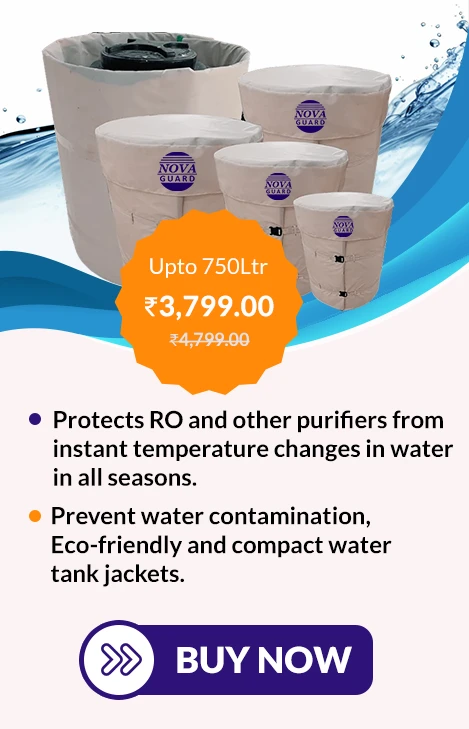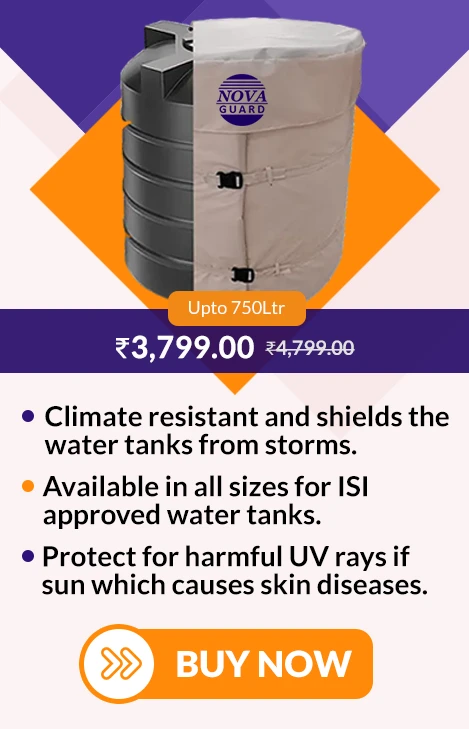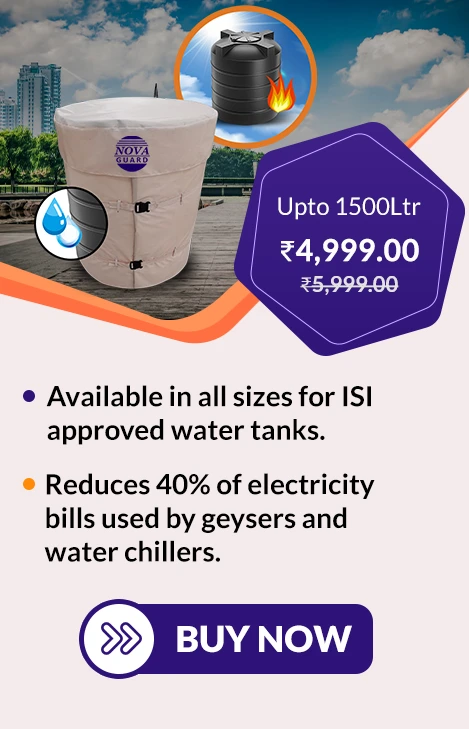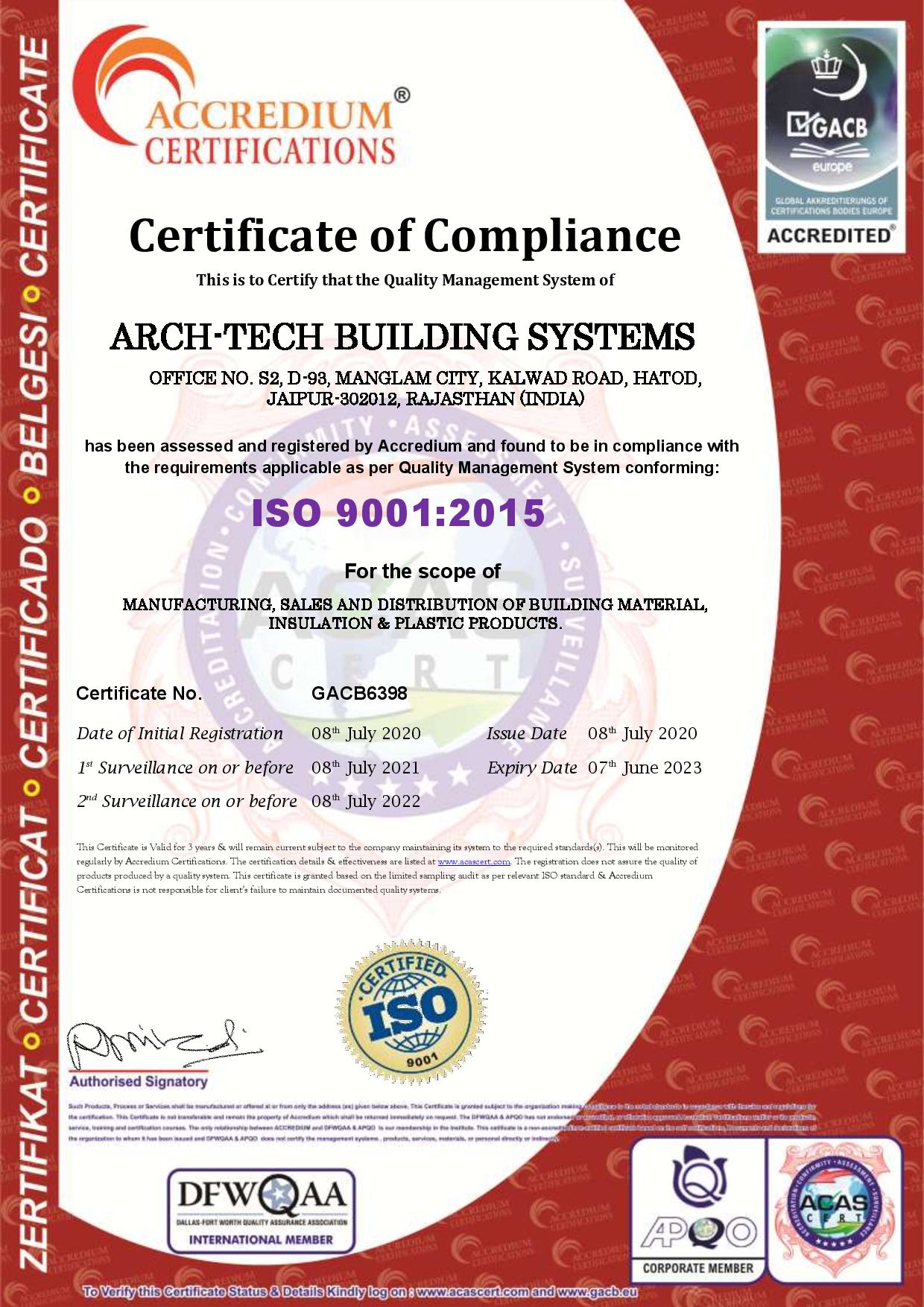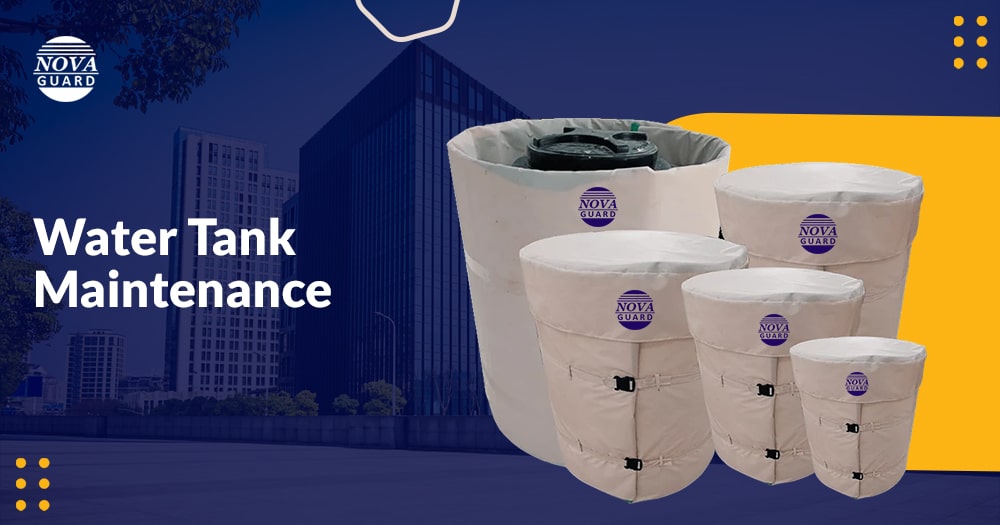
Publish on: Jul 19, 2024 Updated on: Jul 19, 2024
Water Tank Maintenance Tips
Having clean and safe drinking water is essential for every household. Especially for those areas where water supply is limited. That is why most people prefer to store their water in a water storage tank, which makes water easily accessible whenever it is needed.
However, storing water in a water storage tank is not enough anymore. As the climate is rapidly changing and these water tanks are mainly installed on the roof of houses or residential buildings, then, climate temperature can directly affect the water tank and accumulate sediments, algae, and other bacteria over time, which lowers the water quality and increases health risks.
Well, there’s a simple way to avoid all these water tank issues, i.e., maintaining your water tank.
By doing a regular maintenance of your water tank, you can prevent the outer temperature effects inside the tank and keep the water clean, safe and consumable without any contaminants.
In this blog, we will understand the importance of water tank maintenance, types of tanks, complete checklist and best practices to efficiently maintain your water storage tank.
Why Water Tank Maintenance is Essential?
Here are six key reasons why water tank maintenance is essential in every household:
1. Health and Safety
One prime reason why water tank maintenance is important is to maintain the health and safety of people drinking water. With time, bacteria, germs, and sedatives build up within the task due to continuous water flow. If left unchecked, these may cause waterborne diseases and other health problems. Proper maintenance and regular cleaning of the tank minimize microorganism growth, ensuring water is good for drinking.
2. Preventing Contamination
Water tanks have a higher risk of different contamination. Such as environmental pollutants and animal intrusions. If not sealed properly then rodents, insects, and birds may enter the water tank and contaminate the water. Regular maintenance of the water tank includes:
- Ensuring all lids are properly covered.
- Checking any cracks within the tank.
- Installing a mesh screen.
By taking these steps, contamination prevention becomes easier.
3. Extending Tank Lifespan
Another major benefit of water tank maintenance is extending the tank lifespan. Buying and installing a new tank is an expensive process. By regularly maintaining and cleaning the tank, you prevent structural damage. Additionally, tank maintenance gives a glimpse of regular wear and tear, ensuring you can fix it soon. Repairing these minor issues increases the lifespan of the water tank.
4. Ensuring System Efficiency
The efficient working of a water tank relies mainly on different components such as valves, pumps, and pipes. If there are any issues with these components, regular maintenance helps eliminate them. This approach promotes the free flow of water and maintains the tank in an optimum condition.
5. Cost Saving
Neglecting water tank maintenance is more cost-effective than paying medical bills and changing the entire tank. Contaminated water results in major health conditions, resulting in necessary medical expenses. Any structure damage within the tank requires complete replacement or costly repairs. If you regularly do water tank maintenance, you save a lot of money.
6. Improved Water Flow
If left unchecked for a prolonged period, bacteria and debris accumulate and clog pipes. It results in reduced water pressure and flow. This is a big problem for businesses and households that require continuous water supply. Regular tank maintenance helps to determine these minor issues and unclog pores by removing all collected debris. These steps promote efficient water pressure.
Types of Water Tanks and Their Maintenance Needs
There are different types of water tanks available and each type of tank has different maintenance needs. Let’s explore the most common types of water tanks:
1. Plastic Water Tanks
The most popular type of water tanks are plastic water tanks. Because these are lightweight, affordable, and easily installed water tanks. They are widely used in most households, tons of options available in shape and size with different storage capacities. They are ideally used for residential and industrial purposes.
Maintenance Needs: These plastic water tanks can be easily cracked or damaged with direct sun rays. So it requires proper maintenance to protect from the UV rays to extend durability and prevent contaminants.
2. Steel Water Tanks
Another popular type of water tanks are steel water tanks. These steel water tanks are known for their durability, resistance and versatility. These types of water tanks are used in industrial, commercial and municipal areas. Because of their longevity up to 30 years.
Maintenance Needs: The steel water tanks are a bit expensive as compared to other water tanks. But they come up with more advantages. However, steel tanks can emit greenhouse gasses in humid or harsh environments and potentially cause water contamination.
3. Concrete Water Tanks
Concrete water tanks are the most long lasting water storage tanks, with up to 50 years of lifespan. However, these water tanks are expensive and require professional help for underground or above ground construction. These are less prone to cracks or leaks, and high temperatures keep the water free from contamination and maintain the inside temperature. They are widely used for storing large amounts of water in residential, commercial, and industrial applications.
Maintenance Needs: The concrete tanks can develop cracks and problematic to fix, if the tank is not sealed properly. So, it is essential to cover the concrete tank properly to avoid such issues.
4. Fiberglass Tanks
Fiberglass water storage tanks are another type of tank that is made from layers of reinforced fiberglass materials, which are lightweight, strong, and durable. These types of water tanks are preferred for above ground, with various shapes and sizes, effortless installation, and protection of the inside water from bacteria and continents. Plus, it provides thermal insulation, which means less electricity consumption. It’s a best-fit water tank for those areas where electricity shortage is a big concern to keep the inside water temperature maintained without electricity consumption.
Maintenance Needs: Direct sunlight can weaken the fiberglass material, crack it, and reduce the lifespan of a water tank.
Regular Water Tank Maintenance Checklist
To keep your water storage tank durable for a longer lifespan, some regular maintenance is required. Here’s the quick water tank maintenance checklist that you can consider:
1. Regular Inspections
You should conduct a regular inspection of your water storage tank every six months or less. Check for leaks, cracks or discoloration. If there are any then repair them immediately to protect from further damage. Also, check the tank’s lid and ensure it is properly sealed to prevent any external contaminants.
2. Cleaning and Disinfection the Tank
Cleaning a water tank is another crucial step to take at least once a year. It helps to prevent the bacteria and other contaminants that can badly affect the water quality. You can use a mild detergent and a brush to scrub inside the water tank. And then clean it with water to keep the water tank clean and maintained.
3. Inspect Valves and Fittings
You should regularly check for valves and fittings of your water tank to ensure they’re functioning properly. Especially, when you’re cleaning the water tank then you can inspect it in detail. And if you notice any rust or corrosion then you should immediately replace them.
4. Check Water Quality
Also, you should check the stored water quality on a regular basis. To identify the pH, hardness and presence of bacteria. There are many water testing kits available in the market. Which can easily tell you the quality of water. If you find low water quality or then you should immediately stop the water supply, clean the tank and fill with pure water to avoid various health issues.
5. Insulate the Tank
To keep your water tank protected from extreme temperatures then, insulation is the best option. There are various insulated covers and blankets available that will protect the water tank from these UV rays and maintain the tank’s inside water temperature with low electricity consumption. You can choose the insulated cover, wrap it properly around the water tank, ensure its high lifespan, reduce the chance of contaminants in water, and provide a healthy living with low electricity consumption.
The Role of Water Tank Covers in Maintenance
Water tank covers play an essential role for many purposes, including protecting the water storage tank from harsh temperatures, extending its durability, preventing contamination from the water, and regulating the water temperature inside the water tank for easy consumption.
For extreme weather conditions, water tank covers provide thermal protection and keep the water cool inside the water tank during the summer and keep the water warmer in winters without energy consumption. There are different types of water tank covers available for different purposes, materials, shape and size.
You can easily find the best-fit cover for your water tank. Nova Guard is the most trusted brand for finding the best water tank cover with high quality and high thermal resistance.
Overall, investing in a good water tank cover is essential to protect your water tank from extreme weather, extend its durability, keep the water balanced and reduce the electricity consumption.
Conclusion
By properly maintaining your water tank, you can extend its lifespan, prevent outer damage and contaminants in water, save on electricity consumption, and ensure a clean water supply. We hope this guide helps you know the importance of water tank maintenance and a complete checklist for proper tank maintenance. Now, it’s your turn to follow the given checklist and take action to have a clean water supply and prevent various issues.
FAQ’s Water Tank Maintenance
Q.1 How to do water tank maintenance?
With regular inspection, cleaning, and proper insulation, you can do water tank maintenance.
Q.2 How do I keep my water tank safe?
To protect your water tank from direct UV rays or extreme weather conditions, you can use a thermal water tank cover to wrap around the surface and prevent outer temperature from affecting the water tank, and ensure high durability.
Q.3 Why is regular water tank maintenance important?
To ensure a clean water supply, good lifespan of water tanks, and reduce electricity consumption.
Q.4 What are the signs that my water tank needs maintenance?
When you inspect the water tank and find leaks, cracks or discolored water then it’s a sign that it needs maintenance.

